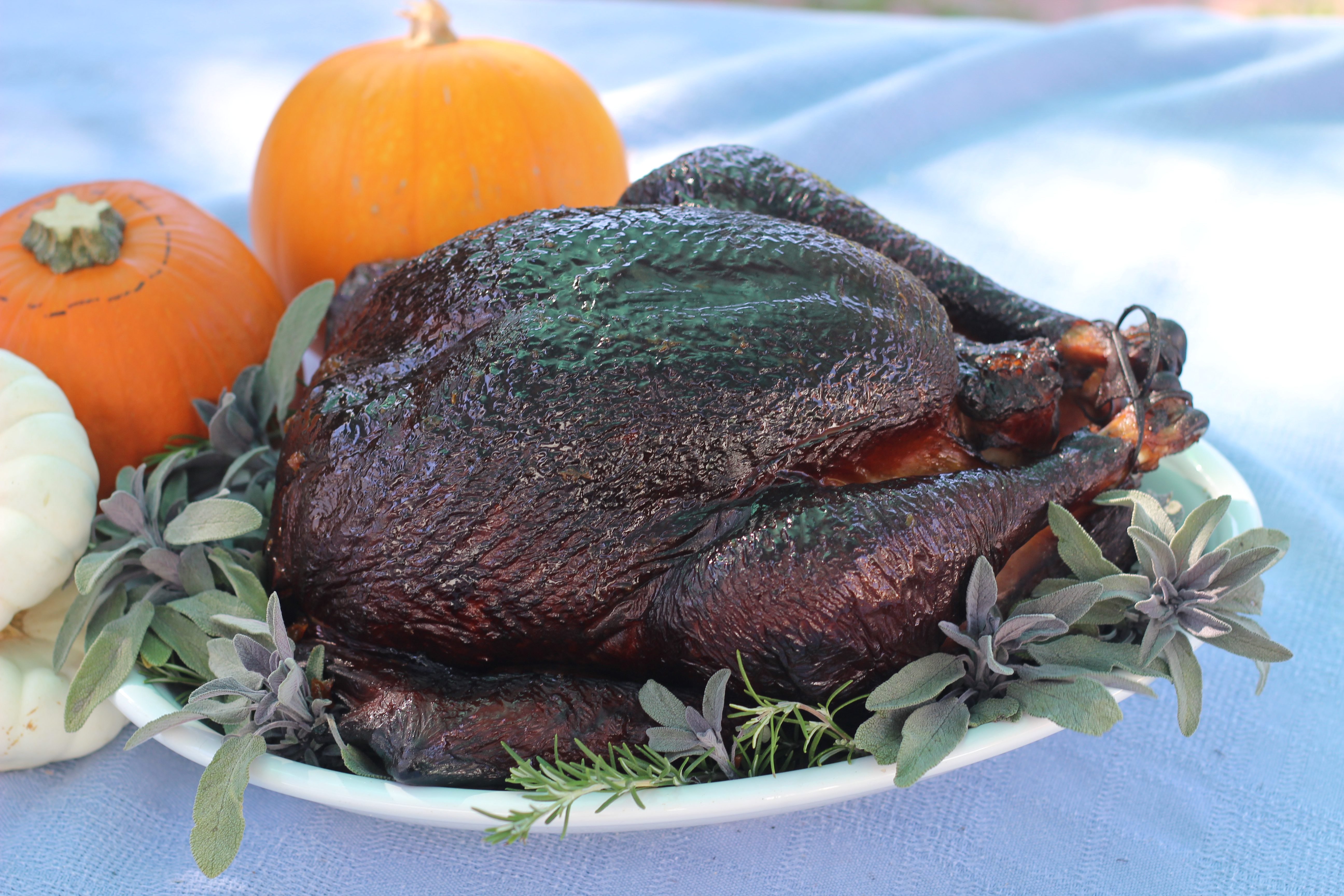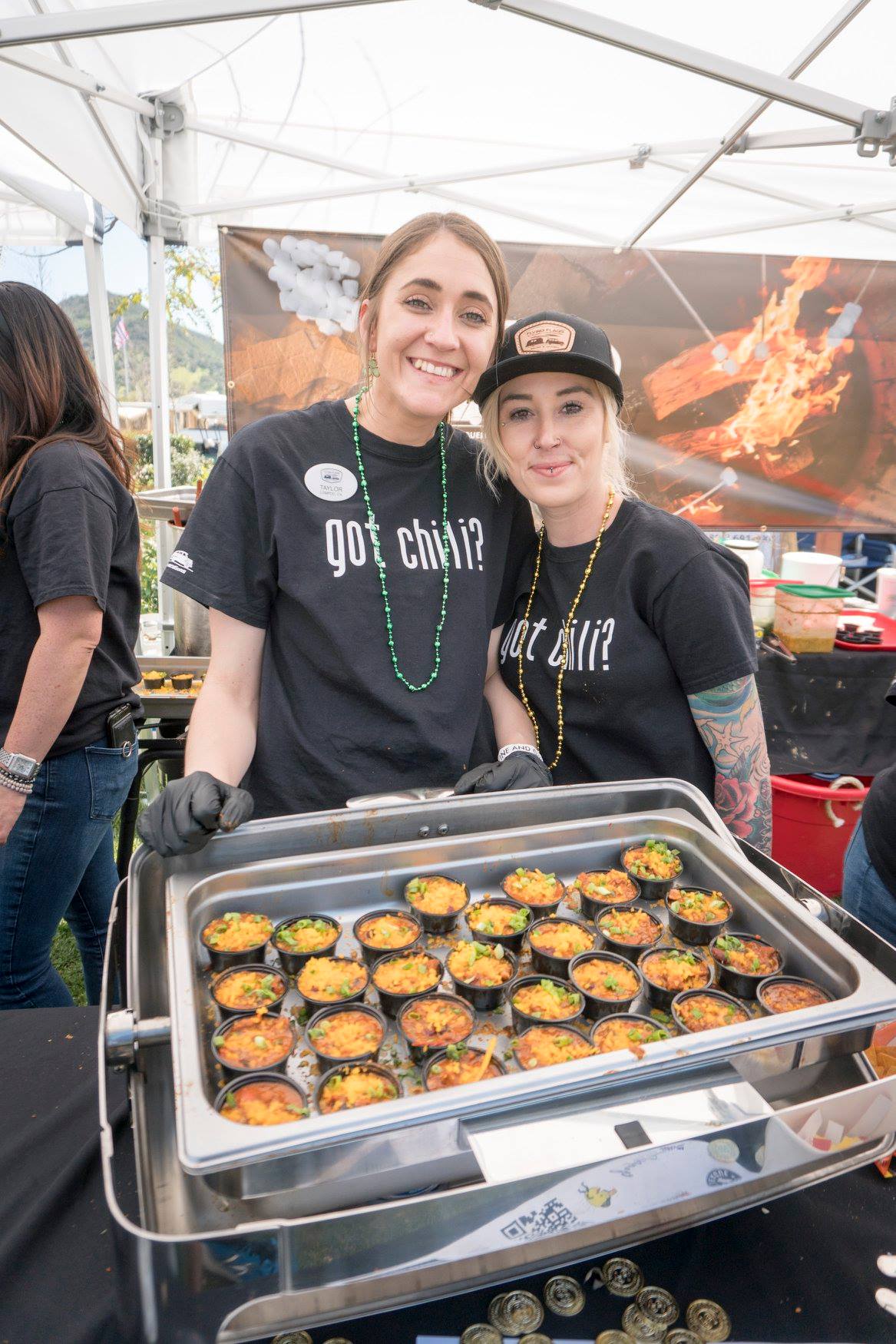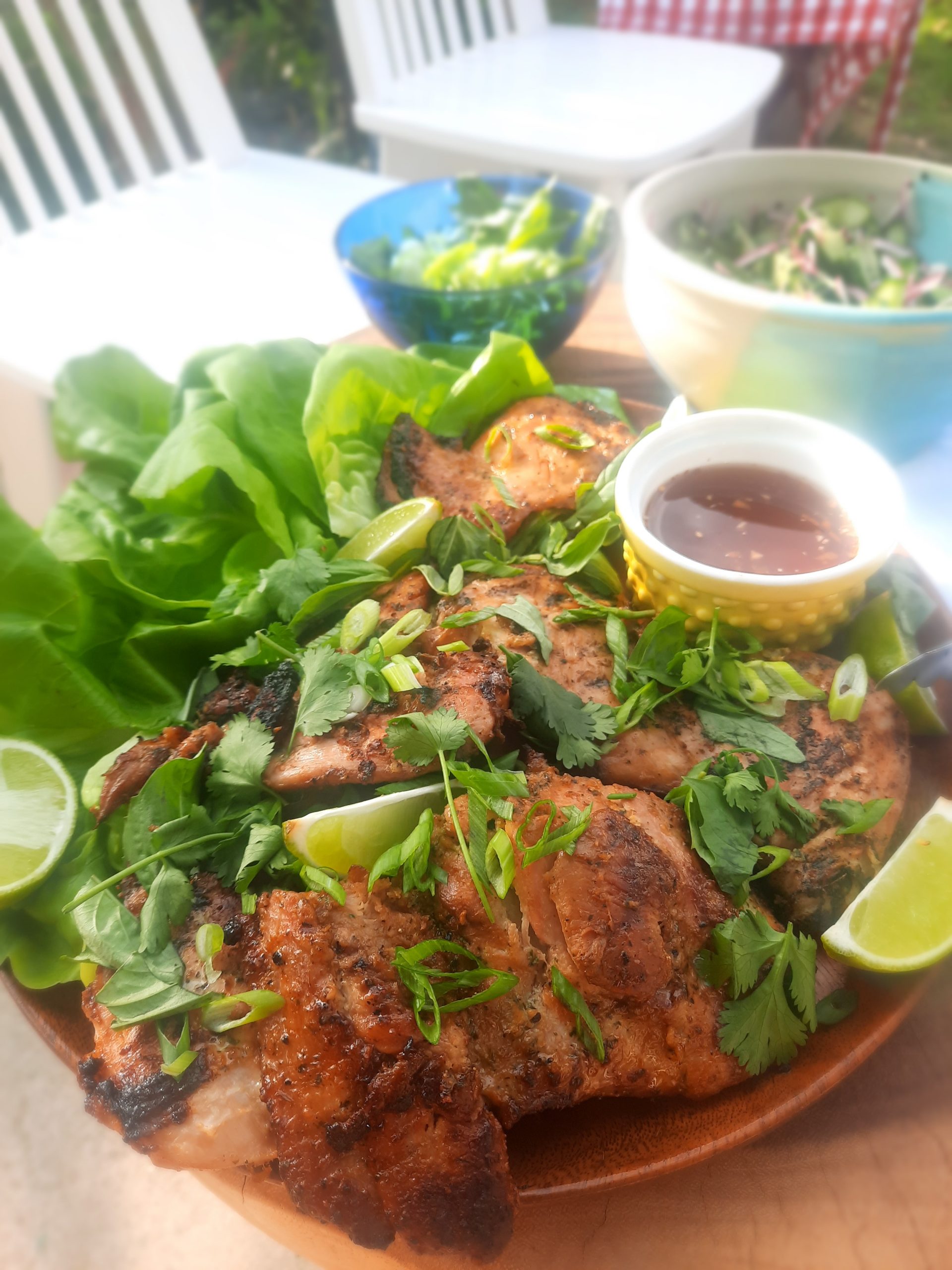
Vida Gustafson with her husband Jacob and their children, William, Gabriel and Penelope.
By Vida Gustafson
Contributing Writer
With Thanksgiving here and Christmas approaching, thoughts turn to big family dinners. Here are three recipes — for smoked turkey, a special vegetable dish and an easy dessert — that may brighten your holidays.
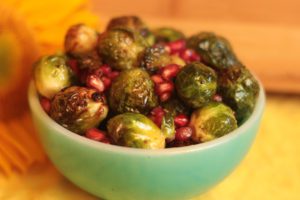 Maple and Pomegranate Brussels Sprouts
Maple and Pomegranate Brussels Sprouts
We have some beautiful produce here on the Central Coast, and two of my favorite early fall crops, pomegranates and Brussels sprouts, happen to go really well together!
Brussels sprouts have a reputation for being bitter and sulfurous, but with method and know-how you can prepare them to be a mild, nutty and crispy side dish.
First, be sure to use sprouts that are small, compact and bright green. Trim off any woody bottoms before cooking. If they are uneven in size, cut larger ones in half or even quarters to ensure they will all be cooked to the same degree of doneness in the same amount of time. Second, the blanching step might seem like needless effort, but in reality what you’re doing is converting starch to sugar, which ensures better taste and caramelization. Proper blanching also locks in that vivid green color.
Ingredients
1 lbs. fresh Brussels sprouts, washed, trimmed and halved if necessary
2 tbsp olive oil
1 tbsp maple syrup
2-3 tbsp sea salt (2 tbsp for the water, one for pre-roasting)
Black pepper to taste
Seeds from 1 pomegranate, approx. 1/2 C
You will also need a large pot to bring salted water to a boil, a colander, a bowl of iced water, and a sheet pan lined with parchment paper.
Method
Preheat your oven to 450 degrees F, on convection if possible. Prepare a large stock pot with at least half a gallon of clean salted water for the blanching. Plenty of water ensures the water will be heat-stable when adding the vegetables.
Salt the water in the same way you would for cooking pasta. This not only helps season, but also ensures your sprouts won’t turn brown.
Once your pot water has come to a boil, add your sprouts and cook for only 2 minutes. This might seems negligible, but the water will have done its job! Next pour into the colander to drain and then pop the sprouts into the iced water for another minute. This is the second step in locking in that color.
Drain and pat dry your Brussels sprouts and toss them in a bowl with the maple syrup, olive oil, salt and pepper.
Arrange them on your baking tray and roast for 20-25 minutes. Once they are done to your taste, add them to a serving bowl and top with the pomegranate seeds. These are best eaten straight out of the oven.
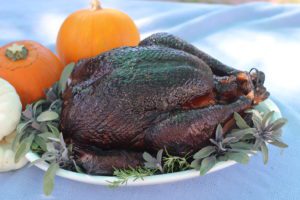 Smoked Turkey
Smoked Turkey
The best kind of turkey, in my opinion, is a smoked turkey. The smokiness gives the normally bland meat some character. And the slow cooking method — combined with a brine, of course — yields a moist, tender bird.
If needs must, you can really skip the flavorings in the brine and stick with a simple sugar and salt brine, but the little extra effort adds a lot of flavor. Smoking also has the benefit of freeing up the oven for preparing those sides we all love. The only drawback is that the skin is usually not edible, although lots of my friends disagree; they say it’s their favorite part.
It truly makes the best sandwiches or soup the next day, too, if you can find any leftovers.
Ingredients
2 gallons water
1 lb. brown sugar
1 c kosher salt
1/2 gallon apple juice
2 oranges (sliced)
4 oz fresh ginger (bruised sliced)
10-12 whole cloves
4-5 bay leaves
2 tsp black pepper
You will need a large container, big enough to fit the turkey and brine and small enough to fit in the fridge, even if you have to take out a rack or two. Some people instead brine the turkey in a cooler, swapping some water for ice.
Also essential is a smoker, electric smoker or kettle grill ( If using a kettle grill, you will be smoking at a higher temperature for a shorter time, but it can be done).
Also use your own thermometer (Try not to rely too much on the pop-up thermometer in the turkey breast.), and get a big bag of charcoal and some apple wood chips
Method
Prepare the brine in a large container, stir until the salt and sugar are dissolved and put your turkey in gently. Brine the turkey for 18-24 hours, making sure the temperature of the brine remains under 40 degrees.
Remove the turkey from the brine and pat dry. You don’t have to put any seasoning on, because the brine took care of seasoning the meat already. Start up your smoker as per the manufacturer’s instructions and soak the wood chips before adding them to the charcoal. You may use 2-3 batches of wood chips during the smoking process — turkey meat is dense and can stand up to plenty of smoke flavor.
How long you cook your turkey will depend on the temperature that you maintain. Use the temperature gauge on your smoker. If you don’t have one, simply check the internal temp of the meat with your digital thermometer after 3 hours at the earliest. Remember, a smoked and brined turkey will be pink on the inside.
As a general guide, a 14 lb. turkey should take about 5-6 hours at 225 degrees and 3-4 hours at 325 degrees.
Either way you do it, the turkey is ready to remove from the fire when your meat thermometer reads 160 degrees in the thickest part of the breast and 170 degrees in the thigh. It will carry over about 5 degrees while resting.
Now you get to sit back and enjoy people telling you that it was the best turkey they’ve ever had!
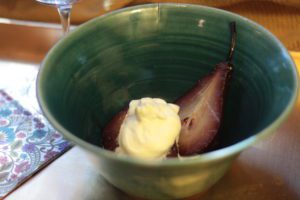 Red Wine Poached Pears
Red Wine Poached Pears
This is perfect and delicious for when you want to “bake” without really baking, and even though it seems like a very adult desert, my children ask for it every winter.
Be sure use a good bottle of wine; if you don’t want to drink it, you won’t want to eat it.
Ingredients
5 peeled pears (I used Bosc )
1/2 bottle of good red wine (I used a local grenache )
1/2 c sugar
cinnamon stick, or 1 tsp ground cinnamon
4-5 whole cloves or 1/2 tsp ground cloves
1 star anise pod or 1/4 tsp ground star anise
1 tsp vanilla extract
1 tbsp cornstarch
Method
When peeling each pear, be sure to leave the stem and a small amount of skin around it. This makes a beautiful presentation and gives you something to handle them by. Cut the bottom of the pear so that it can sit flat without falling over.
In a medium saucepan mix your red wine, sugar and spices and vanilla extract. Be sure to use a pan that is only barely large enough to fit all the pears, or you’ll have to water the wine down too much. Place your pears upright in the saucepan and add enough water to reach the tops.
Bring to a slow simmer. Do not cook these at a rolling boil, as this would make them fall apart. Low and slow is your friend here. Cover and simmer gently for 2 hours.
Once the pears are cooked, remove them gently from the cooking liquid to a serving bowl. Raise the heat on the poaching liquid to medium and cook uncovered until half of it has evaporated. There should be about 1 and a half cups left.
Now mix the cornstarch with a spoonful or two of water in a cup to form a slurry and add that to the remaining poaching liquid. Stir continuously while the liquid thickens slightly. Pour thickened sauce over pears and serve with vanilla ice crea

